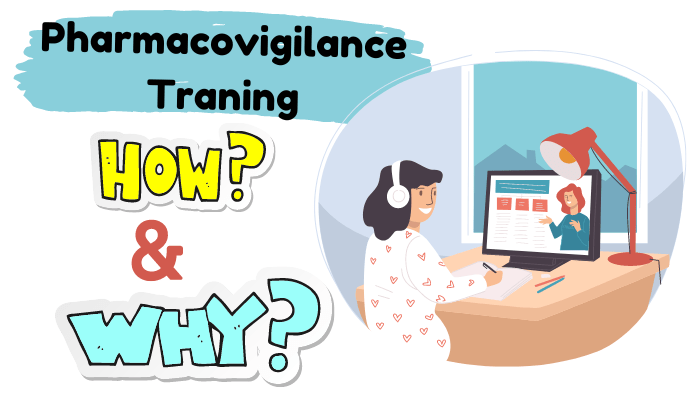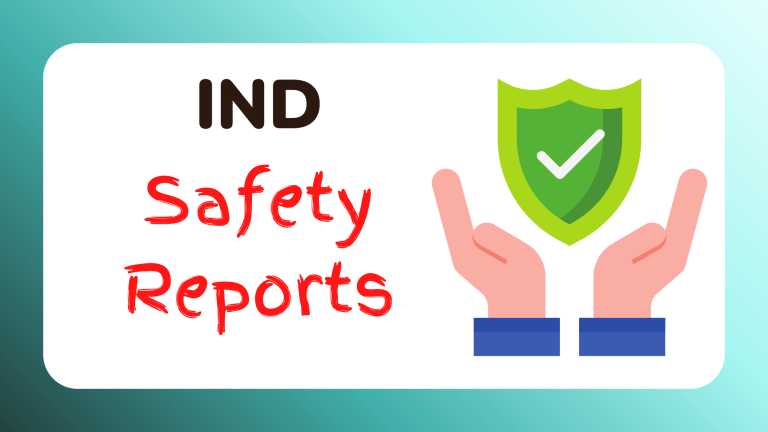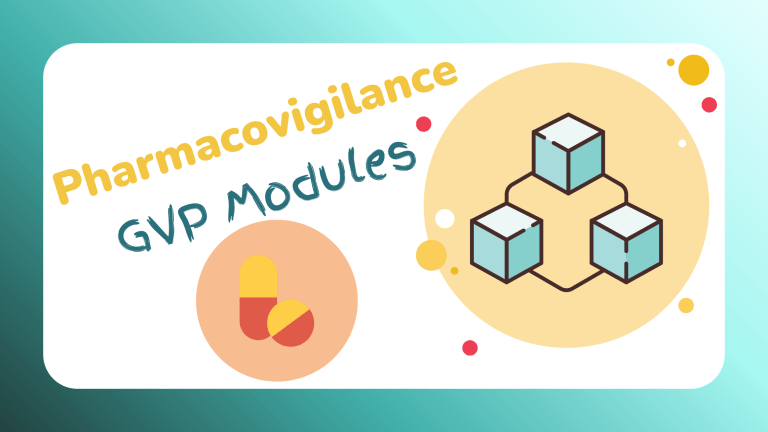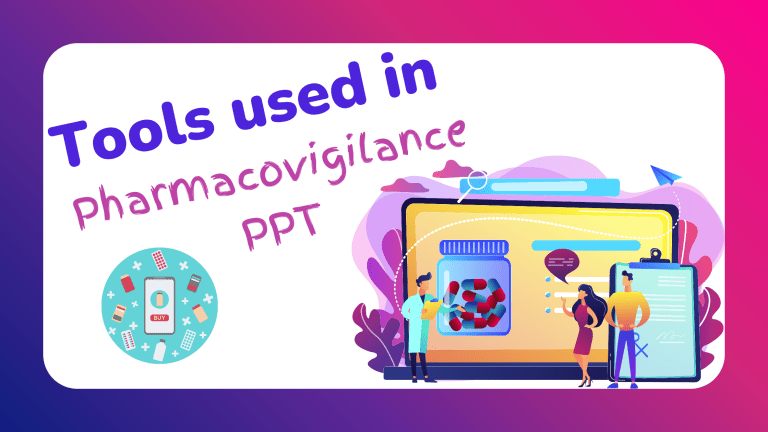65 Hidden Pharmacovigilance Interview Questions: Get PV Officer Job Now!
Best Collection
-
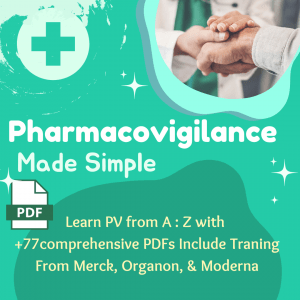 Product on salePharmacovigilance PDF MaterialsOriginal price was: 299 $.49 $Current price is: 49 $.
Product on salePharmacovigilance PDF MaterialsOriginal price was: 299 $.49 $Current price is: 49 $. -
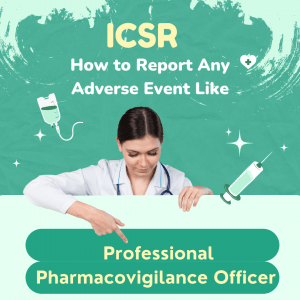 Product on saleICSR Pharmacovigilance | Individual Case Safety Report Online TrainingOriginal price was: 59 $.19 $Current price is: 19 $.
Product on saleICSR Pharmacovigilance | Individual Case Safety Report Online TrainingOriginal price was: 59 $.19 $Current price is: 19 $.
65 Pharmacovigilance Interview Questions Get Ready Fast For Interview (2022 Updated)
Getting ready for Pharmacovigilance interview questions can be so confusing. How frustrating how could you learn in a short time everything about Pharmacovigilance especially if you do not have any background about how and what Pharmacovigilance materials to upgrade your knowledge?
“Want to Show How Knowledge You are, just Keep Reading”
You have searched a lot but there is so much information available on the internet that it can be hard to know what is relevant and what isn’t. Not to mention, no data is organized in logical order.
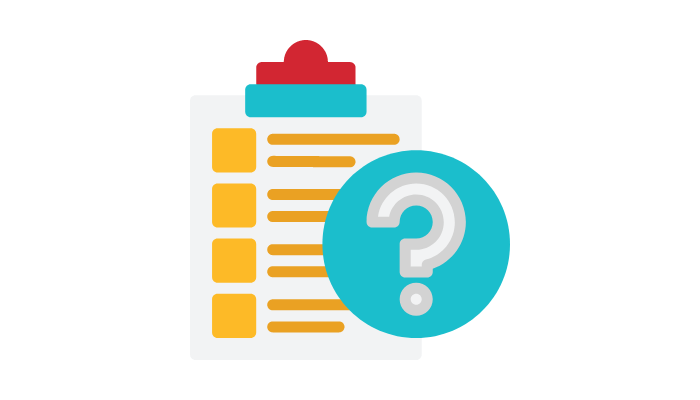
Due to being accepted in the Pharmacovigilance interview and practicing for more than 4000 hours, I have collected the most important Pharmacovigilance interview questions and answers in one place. This guide will help you pass any sudden Pharmacovigilance interview without any doubts.
But if you want to learn Pharmacovigilance in just a week, check out our ICSR Pharmacovigilance Training and Best Pharmcovigialn. AllDFs Materials all of my experience in these training materials.
Prepare Now for any Sudden Pharmacovigilance Interview Questions
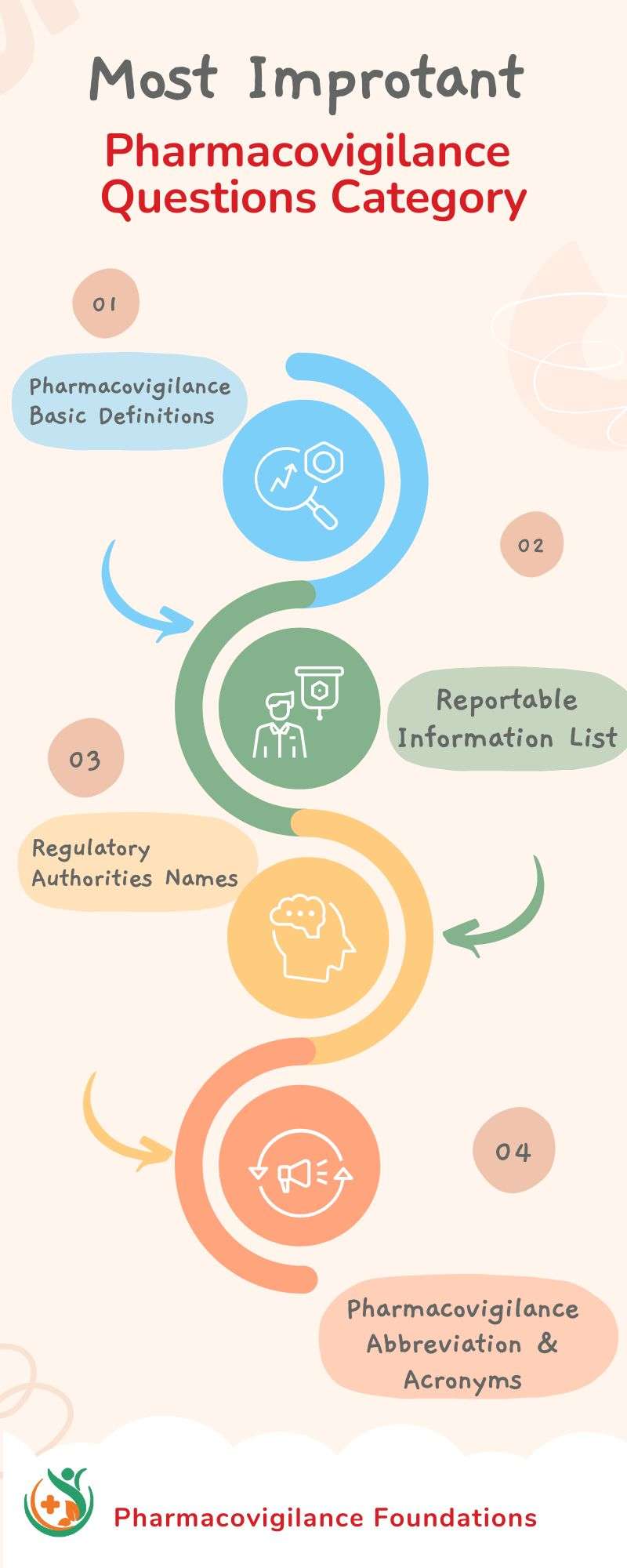
I will build your knowledge from basic Pharmacovigilance knowledge to advanced Pharmacovigilance. These answers will cover
- Tcs Pharmacovigilance Interview Questions
- Syneos Pharmacovigilance Interview Questions
- Cognizant Pharmacovigilance Interview Questions
- Pharmacovigilance Interview Questions In Accenture
- Continuum Global Solutions Interview Questions
- Covance Interview Questions
- Clinical Data Management Interview Questions
- Clinical Trial Associate Interview Questions
- Medical Affairs Interview Questions
- Interview Questions For Regulatory Affairs Fresher
- Fda Interview Questions
If you want to have a deep understanding of Pharmacovigilance to nourish your knowledge, check out these courses
-
 Product on salePharmacovigilance PDF MaterialsOriginal price was: 299 $.49 $Current price is: 49 $.
Product on salePharmacovigilance PDF MaterialsOriginal price was: 299 $.49 $Current price is: 49 $. -
 Product on saleICSR Pharmacovigilance | Individual Case Safety Report Online TrainingOriginal price was: 59 $.19 $Current price is: 19 $.
Product on saleICSR Pharmacovigilance | Individual Case Safety Report Online TrainingOriginal price was: 59 $.19 $Current price is: 19 $.
1- What is Pharmacovigilance?
Pharmacovigilance is the science and activities of collecting monitoring researching assessing, understanding, and preventing adverse effects or any other drug-related problems.
Pharmacovigilance activities can be carried out by pharmaceutical companies, healthcare professionals, patients, or consumer organizations.
Pharmacovigilance is Post-marketing surveillance is the ongoing monitoring of the safety of medicines after they have been authorized for marketing.

This monitoring can be carried out through various means, including clinical trials, epidemiological studies, reports from healthcare professionals and patients, and other adverse event monitoring systems.
Pharmacovigilance plays an important role in ensuring the safe use of medicines and minimizing the risks associated with their use.
What is the objective of pharmacovigilance?
One of the main objectives of pharmacovigilance is to report safety concerns about medicines. This can be done by anyone, but most reports come from healthcare professionals such as doctors, pharmacists, and nurses any of health care professionals.
What are the main components of pharmacovigilance?
Pharmacovigilance is the science and activity relating to the detection, assessment, understanding, and prevention of adverse effects or any other medicine-related problem.
The main components of pharmacovigilance are adverse drug reaction (ADR) reporting, risk management, and post-marketing surveillance.
Reporting systems for adverse reactions to medicines exist in most countries but vary considerably in their structure, legal basis, methods, and level of activity.
Nevertheless, all countries should have some type of system in place for the identification and assessment of adverse reactions to medicines.
How many Pharmacovigilance types are there(PV)?
There are two main types of pharmacovigilance: active and passive.
Active PV involves the proactive identification of potential safety concerns through data mining of sources such as clinical trial databases, social media, patient registries, and literature reports.
Passive PV relies on spontaneous reports of adverse events from patients, healthcare professionals, or the general public.
These reports are then used to identify potential safety concerns. Pharmacovigilance is an important tool in ensuring the safe use of medicines and protecting patients from avoidable harm.
It is also constantly evolving, with new technologies and data sources emerging all the time. As such, it is an essential part of any risk management strategy for pharmaceutical companies.
What are Data Assessments In Pharmacovigilance?
Data assessments in pharmacovigilance are the process of reviewing data elements to ensure accuracy and completeness, as well as to assess potential risk factors.
This data can come from a variety of sources, including clinical safety data management systems, literature reviews, and reports from healthcare providers.
By carefully assessing this data, pharmacovigilance experts can identify safety concerns and develop strategies to mitigate risks.
In doing so, data assessments play a vital role in keeping patients safe and ensuring the efficacy of medications.
What are the benefits of Pharmacovigilance?
Pharmacovigilance is the medical dictionary’s definition of “the science and activities relating to the detection, assessment, understanding, and prevention of adverse effects or any other medicine-related problem.”
In other words, it’s the systematic process of collecting, analyzing, and disseminating information about adverse occurrences that are related to medical products.
Why is Pharmacovigilance important?
Pharmacovigilance can help to ensure that medical products are used safely and effectively by providing precise and concise information about their risks and benefits.
By monitoring the safety of medical products, pharmacovigilance can also help to identify previously unknown risks and reduce the likelihood of future adverse events.
2- What is ICSR ( Individual Case Safety Reports)?
How to fill FDA form to report ICSR ( Individual Case Safety Reports)
-
 Product on salePharmacovigilance PDF MaterialsOriginal price was: 299 $.49 $Current price is: 49 $.
Product on salePharmacovigilance PDF MaterialsOriginal price was: 299 $.49 $Current price is: 49 $. -
 Product on saleICSR Pharmacovigilance | Individual Case Safety Report Online TrainingOriginal price was: 59 $.19 $Current price is: 19 $.
Product on saleICSR Pharmacovigilance | Individual Case Safety Report Online TrainingOriginal price was: 59 $.19 $Current price is: 19 $.
The purpose of an ICSR is to capture adverse events or “side effects” that occur with the use of a medical product.
These adverse events may be caused by the product itself, by incorrect use of the product, or by an interaction between the product and other drugs the patient is taking.
The ICSR also includes information on the patient’s medical history and any other factors that may have contributed to the adverse drug reaction.
An ICSR starts with a report from a healthcare professional, manufacturer, or consumer about an adverse event that occurred in an identifiable patient. This initial report is called a “primary report.”
The primary report is then reviewed by a medical officer who determined whether the adverse drug event is serious and meets the criteria for an ICSR.
If the medical officer determines that an ICSR should be filed, he or she will fill out a “case report form” with additional information about the adverse drug event and the patient’s medical history.
Finally, this case report form is entered into a database that can be accessed by healthcare professionals and researchers.
What is the Importance of ICSR ( Individual Case Safety Reports)?
ICSRs play an important role in understanding the safety profile of a medical product.
They are used to identify new adverse drug events, track adverse events that have been previously reported, and assess the changing safety profile of a product over time.
ICSRs are also used to generate “safety signals” that can prompt further investigation into a potential problem with a medical product.
What are the minimum criteria for a valid ICSR?
The minimum criteria for Valid ICSR are
1- Identifiable patient
2- Identifiable reporter
3- Suspected medicinal product
4- Contactable information
What are the Names of data elements in ICSR?
The patient’s age, gender, and race are some of the patient demographics that are captured in an ICSR.
Screening patient records for potential inclusion in a clinical trial is another way to collect data.
The patient’s past medical history, current medications, and other risk factors are important details that help determine whether or not they are eligible for a particular study.
The adverse drug event details captured in an ICSR can be used to monitor the safety of medication or track the progression of a disease.
By understanding the data elements in ICSR, researchers can more effectively use this information to improve patient care.
3- What is an adverse drug reaction ADR?
ADRs can be defined as any response to a medicine that is noxious or unintended, and which takes place at therapeutic doses.
ADRs may occur following the therapeutic use of a medicine, during an overdose, or as a result of exposure to the medicine via medical procedures or contaminated products. Reactions that occur only after intentional overdoses are not considered ADRs.
4- What is an adverse drug event ADE?
An adverse drug event (ADE) is an untoward medical occurrence that may present during or after the use of medication.
ADEs can range in severity from mild to life-threatening and may be the result of a medication’s therapeutic effect or an adverse reaction to the medication.
The term “adverse drug event” encompasses a wide range of events, from relatively minor side effects (such as the dry mouth) to more serious events (such as heart attack or stroke).
ADEs are a common source of patient harm and can lead to increased healthcare costs and length of hospital stay. Early detection and reporting of ADEs are essential for preventing further harm.
5-What is the main difference between adverse drug reactions and adverse drug events?
Adverse drug reactions (ADRs) occur when a person takes medication and has an unpleasant or harmful reaction that is not intended, which means the untoward medical occurrence of adverse reactions.
ADRs are distinct from adverse drug events (ADEs), which are any adverse events that occur during treatment with medication, even if they are not caused by the pharmaceutical product itself.
ADEs can include things like errors in prescribing or administration of the medication, as well as adverse events that happen after the patient stops taking the pharmaceutical product.
Most ADRs are caused by interactions between multiple drugs, and they are more common in older patients and those with chronic diseases who take multiple medications.
6- What is Causality Assessment?
Causality assessment is the process of establishing how much causal relationship exists between marketed drugs and any reported side effects.
A causal relationship can be used to attribute clinical events with drugs or in case reports, but it’s also an important tool for determining why certain reactions happen when others don’t despite both being associated.
7- What are Serious Adverse Events?
Serious Adverse Events (SAEs) are serious and unexpected medical events that happen during clinical trials.
SAEs can be life-threatening or result in death, hospitalization, or disability. They can also require an extended stay in the hospital or a change in medical treatment.
SAEs can occur in any phase of a clinical trial, from screening to follow-up.
All SAEs must be reported to the sponsor of the clinical trial so that they can be properly investigated.
For more information on SAE reporting, please see the FDA guidance on Investigational New Drug Applications (INDs). Thank you for your interest in clinical trials!
8- For What is used Yellow Card in Pharmacovigilance
The UK’s Yellow Card Scheme has been around for 64 years.
Established in 1964, it was created to monitor the safety of recently produced medicines and is now overseen by The Medicines & Healthcare Products Regulatory Agency (MHRA).
9- What is Informed Consent?
Informed consent is the process in which a patient’s choices are respected and they’re educated on all sides of any given procedure or intervention.
10- What are the regulatory authorities’ names around the world?
- FDA: food and drug administration
- EMA: European medicines agency EMEA
- ICH: International Council for Harmonisation for an international conference on harmonization to monitor medical products.
- Canda Health
- MAH
11- What is Volume 9A and used for what?
Volume 9A is a Risk Management Plan to ensure that organizations are prepared for any potential risk they may face.
12- What is NDA?
NDA is a new drug application that is submitted to FDA for drug approval before phase IV which is post-marketing surveillance.
13- What are Clinical Trials?
Clinical trials are a type of clinical research that aim to find new ways to prevent, detect or treat diseases.
They are also known as clinical investigations.
Clinical trials are only carried out after pre-clinical trials have shown that the treatment is safe and it works in animals.
During a clinical trial, people are carefully monitored by doctors and other healthcare professionals.
The trial is only conducted if it has been approved by an ethics committee.
Clinical research is monitored by healthcare professionals to collect any suspected adverse drug reactions
The aim of clinical trials is to find out if new treatments are safe and effective in people by clinical safety data management clinical investigations.
Clinical safety reporting is collecting adverse drug reactions that occurred in clinical trials as its purpose is collecting data from clinical research to have a safety profile of medicinal products.
Who does approve Clinical Trials?
Marketing authorization holders are also responsible for ensuring that clinical trials are conducted in accordance with the e2b and e2c guidelines.
Competent authorities are responsible for the regulation of clinical trials.
They oversee the marketing authorization process and approve marketing authorization applications.
Marketing authorization holders and competent authorities must work together to ensure that clinical investigation subjects are administered and conducted in a safe and ethical manner.
How many phases are in Clinical Trials?
Phase I
Phase II
Phase III
Phase IV
14- What is Medra?
Click here for more information
15- What are the differences between E2a, E2b, and E2c?
ICH E2a guidelines are for clinical trial reporting
ICH E2b guidelines are for clinical safety data management maintenance
ICH E2c is a Periodic Safety Update Report for Marketed Drugs and Periodic Benefit-Risk Evaluation Report.
16- What is EudraVigilance?
The EudraVigilance system is an important tool for monitoring and tracking medicines across Europe.
It provides a centralized hub to collect data, which we then analyze in order to detect adverse events such as death life-threatening hospitalization
17- What is the reporting timeline?
After 7 days or 15 days from the awareness day of any adverse drug reaction
Used reports by healthcare providers are:
Individual case safety reports
Periodic safety update report
What is Zero Day?
First awareness day of adverse drug reaction
18- What is Risk Management in Pharmacovigilance?
Risk management is the process by which risks associated with medicines are identified and minimized.
This process typically includes risk minimization activities such as product labeling changes, education of healthcare professionals and patients, and implementation of other safety measures.
19- What are Safety Signals?
Medication Safety Signals are not alarms, they’re notifications about possible side effects or new drug adverse effects.
Safety surveillance means the awareness of adverse occurrences. from identifiable reporter
20- What is the difference between NDA and IND?
IND applications are used to officially apply for clinical trials, NDA ones refer to drug registration and marketing while ANDA applies only when there is a generic version of the product being made.
21- What is Medical Confirmed Case?
Medical reports confirm the adverse event whether in clinical research or post-marketing.
22- How is the Narrative in ICSR Should consist of?
The narrative should consist of precise and concise information about the source, patient demographics including their medical history as well as any concomitant medications they may be taking.
The report also includes suspect product details along with adverse occurrences in an orderly manner so that it can easily outline what happened during treatment.
23- What is GVP?
The European Union has created good pharmacovigilance practices (GVP) to facilitate the performance of drug testing in their countries.
24- What is Spontaneous Reporting?
Spontaneous reports are so-called because they arise during the normal course of a patient’s diagnosis, without any prodding from an investigator.
The term ‘spontaneous’ refers to it just happening while looking at someone who may be experiencing some sort of toxicological symptoms related to medication use or another condition for which treatment has been prescribed by their doctor.
25- What is aggregate reporting?
The idea of aggregate reporting is to take the data from many cases and pool them together in order to get an understanding of what effects this drug may have on people.
26- What is PV case processing?
PV case processing is the clinical research and development process whereby a health care professional or team of professionals evaluates the potential value of a new medication or treatment, with the goal of making it available to patients.
27- What is Vigibase?
WHO is the global authority on reported potential side effects of medicinal products. They have created VigiBase, which contains data from more than 2000 surveys conducted in over 100 countries around the world to provide a comprehensive overview of how people react when they take medications.
28- What is Rechallenge in Pharmacovigilance?
The drug is given again after the same drug discontinuation.
29-What is Dechallenge in Pharmacovigilance?
The suspected medical products that may cause the event is stopped.
30- What is the difference between relatedness causality related and causality unrelated?
Relatedness causality is certain, possible, probable, or likely
Causality unrelated is unlikely, impossible, or unclassified
31- When to submit PSUR?
Every 6 months after post-marketing authorization.
32- What should you report in Pharmacovigilance?
In order to detect potentially serious or life-threatening adverse events, it is important to report any adverse event, even if you are not sure that it is related to the study drug.
When reporting an adverse event, please include as many details as possible, such as the date and time of the event, what happened, how long it lasted, and whether you required any medical treatment.
Adverse events can occur at any time during drug development, so it is important to report them as soon as they occur. Thank you for your help in ensuring the safety of our clinical trials.
What is Drug Misuse?
It is taking the wrong dosage or timing a dose improperly; omitting to take a medication, or discontinuing treatment too soon.
What is Drug abuse?
It is using medicinal products outside its prescription.
What is Drug’s beneficial effect?
The unexpected good effect from the medicinal product that is not listed in the drug safety profile after doing clinical research.
What are Medication errors?
The National Coordinating Council for Medication Error Reporting and Prevention defines a drug error as “any preventable incident that may cause or contribute to inappropriate medication usage or patient harm when the medication is in the hands of the healthcare provider, patient, or consumer.”
Most Common Pharmacovigilance Abbreviation & Acronyms
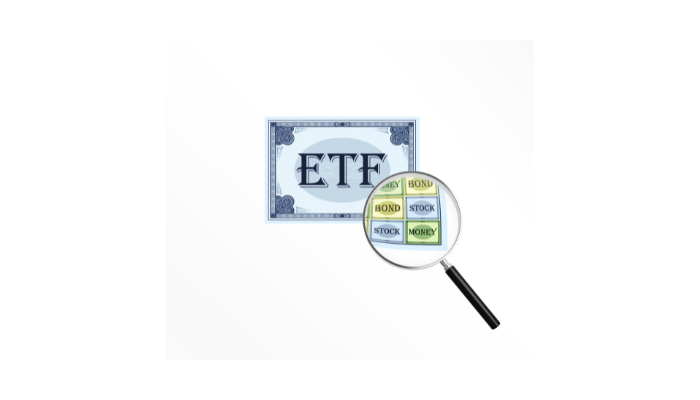
- FDA ➞ united states food and drug administration
- EMA ➞ European medicines agency
- WHO ➞ world health organization
- SUSAR ➞ Suspected Unexpected Serious Adverse Reaction
- SAE ➞Serious Adverse Event
- CIOMS ➞Council for International Organizations of Medical Sciences
- ADE ➞ Adverse Drug Event
- SSAR ➞ Suspected Serious Adverse Reaction
- ADA ➞ Adverse Drug Reaction
- ICSR ➞ Individual Case Safety Report
- PSURs ➞ Periodic Safety Update Reports
- ICH ➞ International Council for Harmonisation of Technical Requirements for Pharmaceuticals for Human Use (ICH)
- HIPAA ➞ Health Insurance Portability and Accountability Act
- ESTRI ➞ Electronic Standards for the Transfer of Regulatory Information
- IBD ➞ International Birth Date
- NDA ➞ New Drug Application
- ISOP ➞ International Society of Pharmacovigilance
- CTs ➞ Clinical Trials
- SOPs ➞ Stander Operating Procedures
- RCA ➞ Root Cause Analysis
FAQsc
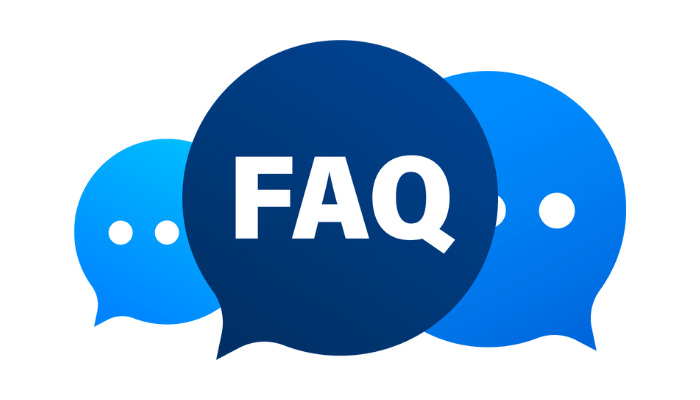
What is the highest salary in pharmacovigilance?
250$ K: 46$ K/Year, check out this video for other high-salary jobs in Pharmcovigilacne and Pharmacovigilance Job Role To Make 100K $ – Discover 12 Other Pharmacovigilance Career
What degree do you need for pharmacovigilance?
- Physician
- Pharmacists
- Nurse
- Life science graduate
What does a pharmacovigilance scientist do?
Managing and reporting adverse event details and interactions to marketing authorisation holders, and regulatory bodies in USA UK, to do regulatory activities as risk management plans to prevent further harmful effects by medicinal products.
For improving user drug experience to get the most benefits.
Is pharmacovigilance a good career?
From my experience, it is not for everyone, only for those who like working from the desktop for long hours to analyze huge amounts of data.
But it is a challenging career and all of your soft skills and hard skills will tremendously improve.
Conclusion
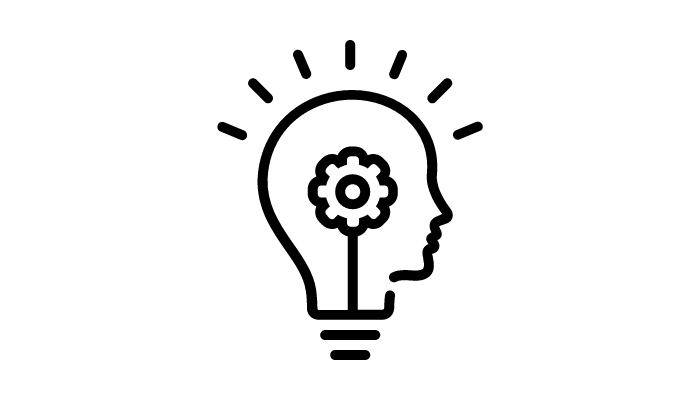
Now you are ready to start your Pharmacovigilance career, as these are all possible pharmacovigilance interview questions that you could face.
Now it is time to gain a deep understanding of pharmacovigilance. Check out
ICSR PharmacovigilanceTraining
Pharmacovigilance PDF Materials
Pharmacovigilance interview questions and answers for experienced pdf free download.

